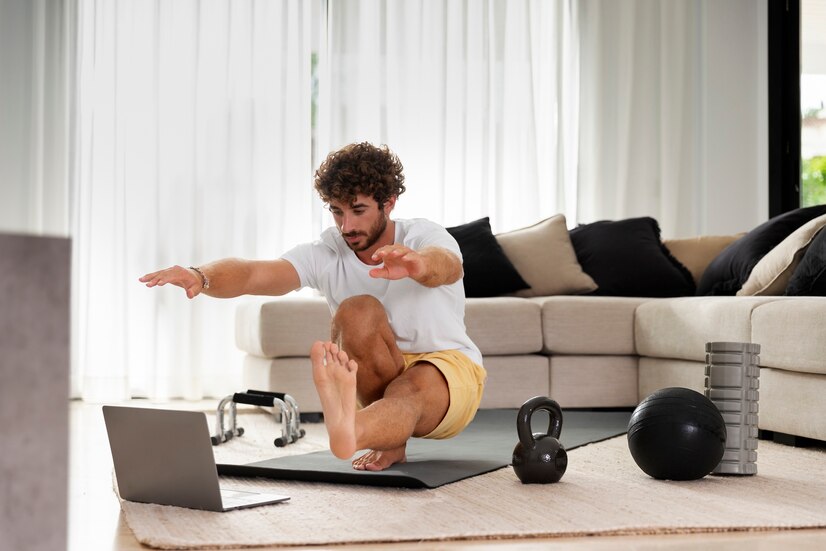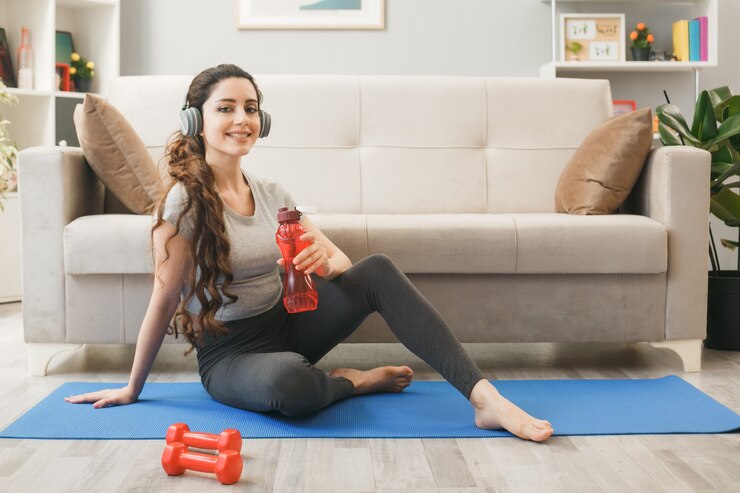
Starting a fitness journey can often feel overwhelming but it doesn’t have to be. “The Best Home Workout for Female Beginners” is your go-to guide, perfectly crafted for those taking their first steps into fitness. This article strips away the complexities of training, presenting a straightforward, easy-to-follow workout plan that you can do in the comfort of your home.
This Home Workout For Female Beginners article is designed to simplify your start in fitness. Not only that, it’s designed to cater to your individual goals whether it’s shedding a few pounds, toning muscles or just boosting overall health and wellbeing. With a focus on simplicity and effectiveness, this guide is your companion in carving out a healthier, more active lifestyle, all without stepping foot in a gym. So, let’s start this fitness journey together, transforming challenges into triumphs, one workout at a time.
This guide builds upon the principles outlined from ‘Simple Home Workout‘ and ‘Home Workout for Beginners‘ articles, offering further tailored exercises and motivation for female beginners.
Understanding the Challenges and Solutions in Home Workout For Female Beginners
When tailoring your workout, always consider your personal goals to ensure this Home Workout For Female Beginners meets your needs, starting a fitness routine at home can be filled with hurdles. Let’s break down these challenges and explore effective solutions:
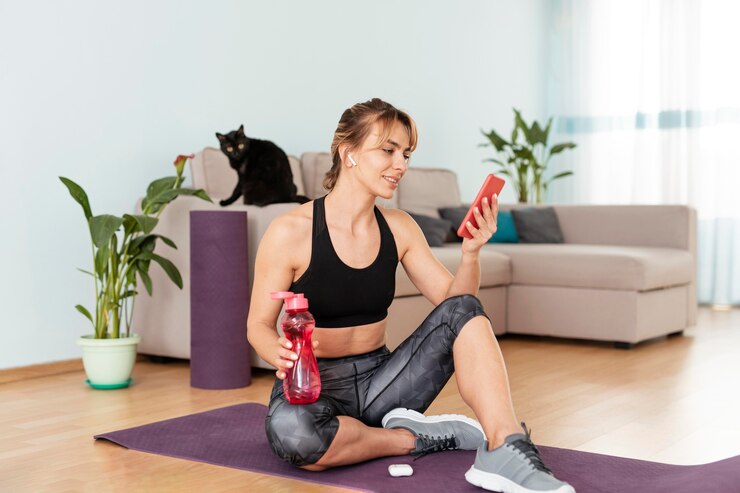
- Challenge: Feeling Overwhelmed by Gym Environments
- Solution: Our home workout plan eliminates the need for a gym. You can exercise in a comfortable, pressure-free environment at your own pace.
- Challenge: Limited Time for Workouts
- Solution: The plan is designed with busy schedules in mind. With workouts starting at just 10 minutes, you can easily fit them into your daily routine.
- Challenge: Uncertainty About Where to Start
- Solution: The guide provides a clear, step-by-step 6-week program, perfect for beginners. It progressively builds up your fitness level ensuring you don’t feel lost or overwhelmed.
- Challenge: Lack of Space or Equipment
- Solution: Our exercises don’t require a lot of space or specialized equipment. A small area and a yoga mat or towel are enough to get you started.
- Challenge: Maintaining Motivation and Consistency
- Solution: The article includes tips on tracking progress and staying motivated, such as keeping a workout diary and celebrating small victories.
- Challenge: Understanding the Role of Nutrition and Hydration
- Solution: Along with workout routines, the guide provides basic nutritional advice and emphasizes the importance of staying hydrated to complement your fitness journey
By addressing these common challenges with practical solutions, this guide aims to make starting and maintaining a home workout routine achievable and enjoyable for everyone.
Tailoring Your Home Workout For Female Beginners to Their Fitness Goals
Creating a workout routine that aligns with your fitness goals is like setting a roadmap for your fitness journey. Just as a traveler chooses a path that leads to their destination, your workout should guide you towards your specific health and fitness objectives. Let’s dive into how different goals call for different approaches, ensuring your effort translates into results.
Achieving Weight Loss
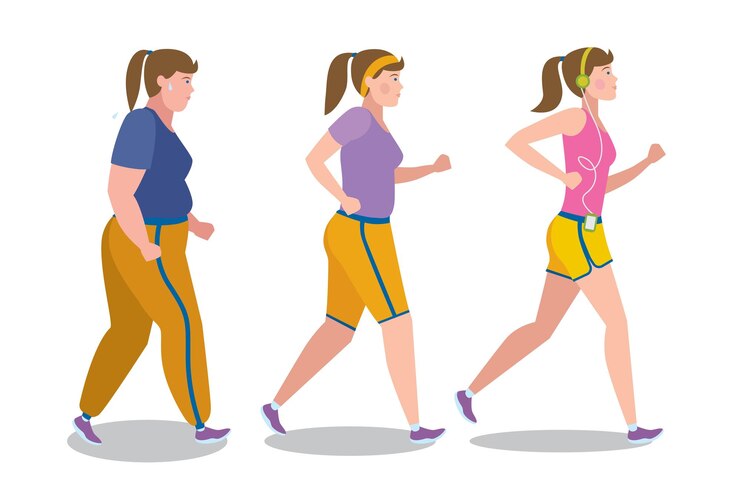
– Cardio Is Key: To shed pounds, your body needs to burn more calories than it consumes. Cardio exercises is best for home workout to lose weight by doing brisk walking, jogging and cycling are great starters. They get your heart rate up, increasing calorie burn. Think of cardio as the accelerator pedal in your fitness car – the more you press, the faster you move towards weight loss.
– Consistency Over Intensity: It’s not about going all out in one session but rather maintaining a moderate intensity over regular sessions. A 30-minute daily walk can be more effective than a once-a-week gym marathon.
Toning Your Muscles
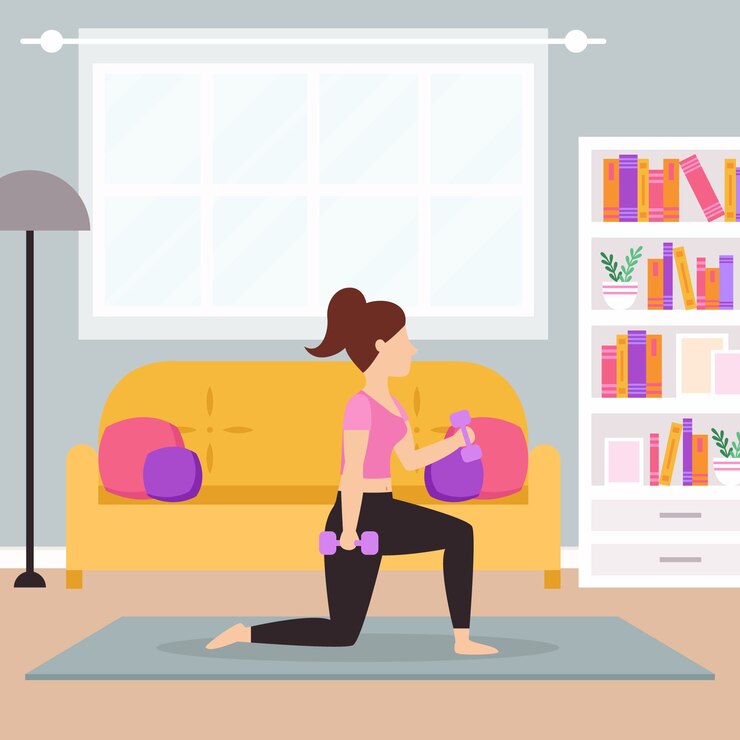
– Strength Training Matters: Muscle toning requires focusing on strength training exercises. This doesn’t mean you need bulky weights, bodyweight exercises like push-ups, squats and lunges are incredibly effective. These exercises create muscle resistance, leading to strength and toning.
– Progressive Overload Principle: Gradually increasing the intensity of your workout is key. Start with what you can manage then slowly increase reps or resistance. This approach keeps your muscles challenged and growing.
Enhancing Overall Health

– A Balanced Routine: For overall health improvement your workout should be a mix of cardio, strength training and flexibility exercises. This holistic approach ensures all aspects of fitness are covered – endurance, strength and flexibility.
– Mind Body Connection: Don’t forget exercises like yoga or Pilates which enhance flexibility and mental wellbeing. This isn’t just about physical fitness it’s about creating harmony between your mind and body.
The Importance of Goal-Aligned Workouts
– Maximizing Efficiency: Aligning your workout with your goals ensures you’re not just working hard but also working smart. It’s about using your time and effort efficiently to get the best results.
– Staying Motivated: When your workouts are aligned with your goals you’re more likely to see progress. This progress is a powerful motivator keeping you engaged and committed.
– Avoiding Plateaus: A goal oriented workout plan helps in continuously challenging your body avoiding the dreaded plateau where progress stalls.
In conclusion, understanding and aligning your workouts with your fitness goals is crucial for effective training. Whether you aim to lose weight, tone up or boost overall health, tailoring your routine to these objectives ensures you’re on the right path to achieving them. Remember every step you take in your workout is a step closer to your fitness destination. With the right plan you can enjoy the journey just as much as the destination itself.
6-Week Home Workout For Female Beginners Plan: Simple and Detailed
Our “Home Workout for Female Beginners” plan is crafted to overcome common barriers that women face when starting their fitness journey. While it can feel overwhelming at first, with a clear plan it’s entirely achievable. Let’s dive into a detailed 6-week home workout plan for female beginners, tailored to three different goals weight loss, muscle toning and overall health. Choose the plan that aligns with your goals, and let’s get moving!
Click this ► to explore pre- and post-workout meals.
For Weight Loss
For weight loss, our Home Workout For Female Beginners focuses on cardio to burn calories effectively. If shedding pounds is your aim, cardio is your game. Cardiovascular exercises are key to burning calories and boosting your metabolism.
Weeks 1-2: Building the Foundation
- Routine: Incorporate easy-to-do exercises like jumping jacks, high knees and jogging on the spot. These activities are great for starting your weight loss journey.
- Duration: Begin with 10-minute sessions. These short, high-intensity workouts are perfect for boosting your metabolism.
- Frequency: Exercising 5 times a week keeps your heart rate up and maximizes calorie burn.
Pre Workout Meal
A small apple and a handful of almonds (Approx. 150 calories).
Optional: A small banana can replace the apple for a quick energy boost.
Post Workout Meal
Greek yogurt with a drizzle of honey and a sprinkle of chia seeds (Approx. 200 calories).
Optional: Non-fat cottage cheese as an alternative to Greek yogurt.
Weeks 3-4: Intensity Increase
- Routine: Add more challenging exercises such as burpees and mountain climbers to your routine to further enhance calorie burning.
- Duration: Extend your workout sessions to 15 minutes to progressively increase your stamina.
- Frequency: Keeping up with the 5-day routine ensures a consistent calorie burn and aids in weight loss.
Pre Workout Meal
Whole grain toast with a thin spread of peanut butter (Approx. 180 calories).
Optional: Avocado toast for those preferring a lower-sugar option.
Post Workout Meal
A protein smoothie with spinach, banana, and almond milk (Approx. 250 calories).
Optional: Add a scoop of protein powder for extra protein.
Weeks 5-6: Peak Cardio
- Routine: Start interval training by mixing high-intensity exercises with short rest periods. This method is highly effective for burning fat.
- Duration: Push your workouts to 20 minutes to maximize endurance and calorie burn.
- Frequency: Continuing with 5 workouts per week helps maintain a high metabolic rate.
Pre Workout Meal
A small bowl of oatmeal with berries (Approx. 200 calories).
Optional: Quinoa instead of oatmeal for a gluten-free option.
Post Workout Meal
Grilled chicken salad with mixed greens and light vinaigrette (Approx. 300 calories).
Optional: Tofu or chickpeas for a vegetarian protein source.
For Muscle Toning
Toning muscles requires a mix of strength training and bodyweight exercises to sculpt and define muscles.
Weeks 1-2: Foundation Strength
- Routine: Begin with fundamental bodyweight exercises such as squats, push-ups and lunges. These exercises lay the groundwork for muscle toning.
- Sets and Reps: Start with 2 sets of 10 reps for each exercise which is ideal for beginners.
- Frequency: Four workouts per week provide enough stimulus for muscle growth without overtraining.
Pre Workout Meal
A banana and a small handful of walnuts (Approx. 170 calories).
Optional: A pear for those who prefer a different fruit.
Post Workout Meal
A tuna salad with light mayo on whole grain bread (Approx. 250 calories). Optional: A chicken or tempeh salad sandwich for variety.
Weeks 3-4: Building Endurance
- Routine: Enhance your routine by including planks and glute bridges, targeting core and lower body strength.
- Sets and Reps: Increase your workout to 3 sets of 12 reps to challenge your muscles further.
- Frequency: Maintaining 4 workouts per week allows for muscle recovery and growth.
Pre Workout Meal
Greek yogurt with a small scoop of granola (Approx. 200 calories).
Optional: Plant-based yogurt for a dairy-free alternative.
Post Workout Meal
Grilled salmon with steamed broccoli (Approx. 350 calories).
Optional: Grilled portobello mushroom for a vegetarian option.
Weeks 5-6: Advanced Moves
- Routine: Introduce more complex exercises like squat-to-press and lunges with a twist to engage multiple muscle groups.
- Sets and Reps: Progress to 3 sets of 15 reps which helps in further muscle definition and endurance.
- Frequency: Sticking to the 4-day routine ensures consistent muscle engagement and toning.
Pre Workout Meal
A smoothie with spinach, banana, and almond milk (Approx. 180 calories).
Optional: Add a scoop of protein powder or a tablespoon of nut butter for extra energy.
Post Workout Meal
Quinoa bowl with black beans, avocado, and fresh salsa (Approx. 400 calories).
Optional: Add grilled chicken or fish for extra protein.
For Overall Health
Aiming for overall health? You’ll want a balanced mix of cardio and strength training to improve endurance, strength and flexibility.
Weeks 1-2: Getting Started
- Routine: Start with a combination of light cardio exercises like brisk walking or light jogging along with basic strength exercises such as squats and push-ups.
- Duration: A balanced approach with 10 minutes of cardio followed by 10 minutes of strength training is perfect for overall health.
- Frequency: Engaging in this routine 3-4 times a week sets a solid foundation for fitness.
Pre Workout Meal
An orange and a small handful of cashews (Approx. 150 calories).
Optional: Swap the orange with a peach or nectarine.
Post Workout Meal
Whole grain toast with scrambled eggs and spinach (Approx. 300 calories).
Optional: Scrambled tofu for a vegan alternative.
Weeks 3-4: Stepping Up
- Routine: Increase your cardio intensity, like faster jogging or adding a jump rope and add more strength exercises like planks and lunges for overall body conditioning.
- Duration: Extend both cardio and strength sessions to 15 minutes to improve endurance and strength.
- Frequency: Exercising 4 times a week helps in building a stronger, healthier body.
Pre Workout Meal
A small bowl of oatmeal with sliced banana (Approx. 200 calories).
Optional: Add a sprinkle of cinnamon or cocoa powder for flavor.
Post Workout Meal
Chicken or tofu stir-fry with a variety of vegetables (Approx. 350 calories).
Optional: Use tempeh or seitan for variety.
Weeks 5-6: Establishing a Routine
- Routine: Mix up your cardio with activities like cycling or swimming if accessible and challenge yourself with complex strength moves like burpees or mountain climbers.
- Duration: Aim for 20-minute sessions for both cardio and strength to maximize health benefits.
- Frequency: A routine of 4-5 times a week is ideal for establishing long-term fitness habits.
Pre Workout Meal
A smoothie with kale, berries, and a small scoop of protein powder (Approx. 250 calories).
Optional: Use a different leafy green like spinach or Swiss chard.
Post Workout Meal
Grilled fish or chicken with quinoa and roasted vegetables (Approx. 400 calories).
Optional: Lentil or chickpea salad for a plant-based protein source.
Key Points
No matter your goal, consistency is key. Start at a comfortable pace and gradually increase intensity. Always listen to your body and make modifications as needed. Pair these workouts with a balanced diet and proper hydration for optimal results. It’s not just about the 6 weeks it’s about building a sustainable routine that enhances your health and wellbeing.
Nutrition and Hydration: Fueling Your Body for Success
Proper nutrition and hydration are the cornerstones of any Home Workout For Female Beginners, fueling your body for success. When it comes to enhancing your workout results and overall health, Nutrition and Hydration play pivotal roles. Let’s dive into what types of nutrition and hydration are essential, why they matter and the benefits they bring.

1. Types of Essential Nutrition
- Proteins: They’re the building blocks of muscle. Include lean meats, beans and dairy in your diet.
- Carbohydrates: The primary energy source for your workouts. Opt for complex carbs like whole grains, fruits, and vegetables.
- Fats: Good fats are crucial for joint health and energy. Sources include avocados, nuts and olive oil.
- Vitamins and Minerals: These support overall body functions. Ensure a colorful plate with a variety of fruits and vegetables.
2. Why Nutrition Matters
- Supports Muscle Recovery: Protein helps repair and build muscles post-workout.
- Provides Energy: Carbs fuel your body for endurance and performance.
- Promotes Overall Health: A balanced diet boosts immunity, energy levels and wellbeing.
3. Benefits of Proper Nutrition
- Enhanced Performance: The right diet can improve your strength and stamina.
- Faster Recovery: Good nutrition speeds up muscle recovery, reducing soreness.
- Better Health Outcomes: Long-term, it leads to improved heart health, stronger bones and reduced risk of chronic diseases.
4. Hydration: The Unsung Hero
- Water regulates body temperature, lubricates joints and aids in nutrient transport.
- During workouts, you lose water through sweat. Replenishing this loss is crucial.
5. Why Hydration is Crucial
- Prevents Dehydration: Dehydration can lead to fatigue, dizziness and muscle cramps.
- Enhances Performance: Adequate hydration means better endurance and strength.
6. The Consequences of Neglecting Nutrition and Hydration
- Without proper nutrition, your body can’t repair itself effectively, leading to prolonged muscle soreness or injury.
- Insufficient hydration can cause dehydration, impacting your overall workout performance and health.
To ensure optimal performance and wellbeing during your workouts, it’s crucial to understand the importance of proper nutrition and hydration. Ignoring these can lead to a range of issues including decreased performance, prolonged muscle soreness, and more serious health concerns. For a detailed understanding of how hydration affects performance, you can visit to an expert article on ACE Fitness.
Additionally, Johns Hopkins Medicine provides an insightful overview on sports and hydration for athletes, highlighting the crucial role of staying hydrated during physical activities. Everyday Health also discusses common hydration mistakes during exercise and how to avoid them. These resources offer valuable advice and tips to help you maintain proper nutrition and hydration, ensuring you get the most out of your workouts while safeguarding your health.
7. Practical Tips
- Drink water throughout the day, not just during workouts.
- Include a mix of protein, carbs and fats in every meal.
- Plan your meals around your workout schedule – a light snack before exercising and a balanced meal afterwards.
In conclusion, paying attention to your nutrition and hydration is not just about enhancing your workout performance, its about investing in your long-term health and wellbeing. However, Ignoring nutrition and hydration during your workout routine can lead to several problems, impacting both your immediate performance and long-term health, visit . A well-nourished and hydrated body performs better, recovers faster and stays healthier, making every bit of your workout count.
Progress Tracking and Motivation

Understanding the Importance of Progress Tracking
Tracking your progress is vital in your journey with Home Workout For Female Beginners, keeping you motivated and focused on your goals. It’s not just about noting down the workouts you’ve completed it’s about understanding your journey, celebrating your achievements and identifying areas for improvement. Tracking helps keep you accountable, motivated and focused on your goals.
Best Practices for Tracking Fitness Progress
- Start with Clear Goals: Before you begin tracking, know what you’re tracking. Set specific, measurable, achievable, realistic, and time-bound (SMART) goals or visit Setting SMART Goals For Success. Whether it’s losing weight, increasing stamina, or mastering a new workout move, having clear goals sets the foundation for effective tracking.
- Use a Workout Diary or Fitness App: Keep a simple workout diary or use a fitness app. Record the exercises you do, the number of sets and reps and any cardio activities and their duration. This record-keeping will show you how much you’ve progressed over time.
- Monitor Your Body Changes: Sometimes, the scales don’t tell the whole story. Take regular measurements of your body, such as waist, hips and chest. Also, pay attention to how your clothes fit. Muscle gain can offset weight loss on the scale but result in a more toned body as suggested by Centers for Disease Control and Prevention (CDC).
- Track Your Nutrition: Fitness isn’t just about movement; it’s also about what you fuel your body with. Keep a food diary or use an app to track your daily intake. This will help you understand the relationship between your diet, workouts and overall wellbeing as recommended by Harvard Health Publishing
- Note Your Feelings: After each workout, jot down how you felt. Were you energized, exhausted or just right? Understanding your emotional and physical responses can help adjust your workout plan for better results
Staying Motivated Through Your Fitness Journey
- Celebrate Small Wins: Every workout completed, every healthy meal chosen and every extra rep is a win. Celebrate these small victories. They add up to big results.
- Set Mini-Goals: While you might have a long-term goal, setting mini-goals can provide short-term targets and satisfaction. Achieving these can boost your confidence and keep you motivated.
- According to Psychology Today:
- “Motivation is a major component that affects our ability to reach our goals. Research demonstrates that people are more motivated when they first set a goal, but lose steam toward the middle, and motivation resurges as they approach their goal.” Or visit How to Stick With Your Goals This Year
- According to Psychology Today:
- Find a Workout Buddy or Join a Community: Sometimes, motivation comes from others. Having a workout buddy or being part of a fitness community can provide encouragement and accountability.
- Keep Your Workouts Varied and Fun: Doing the same workout routine can get monotonous. Mix it up! Try new exercises, change your workout environment or experiment with different types of training like yoga, pilates or dance.
- Reflect on Your Journey: Regularly look back at where you started and how far you’ve come. Reflecting on your progress can be a powerful motivator.
Tracking your fitness progress and staying motivated are intertwined aspects of your health and wellbeing journey. By effectively tracking your progress and keeping your motivation levels high you can change your lifestyle that promotes long-term health and happiness.
Accessibility Considerations
Inclusivity is key in our approach to Home Workout For Female Beginners, ensuring everyone can participate regardless of their physical abilities, living space or available equipment, can engage in effective workouts. Let’s delve into how you can tailor your home workout to fit your unique situation.
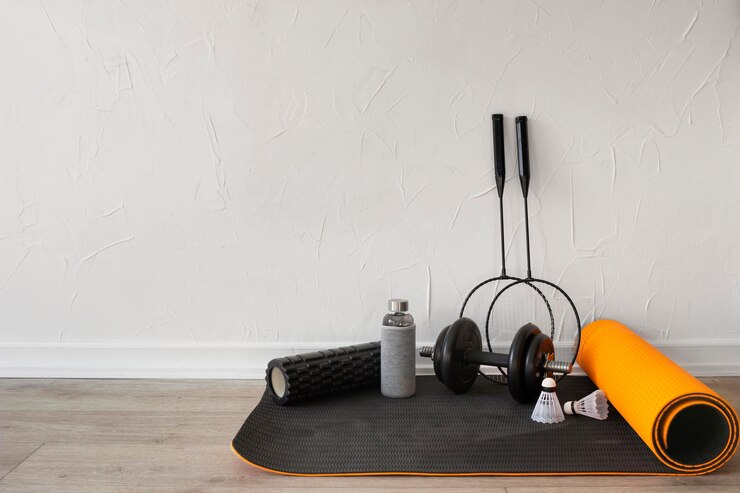
- Working Out in Small Spaces:
Not everyone has the luxury of a spacious home gym but that shouldn’t stop you. In smaller spaces focus on exercises that require minimal movement yet offer maximum impact. Think planks, squats, sit-ups and yoga poses. These exercises can be done in a limited area and still provide a full-body workout. - No Equipment? No Problem:
Lack of equipment is a common hurdle but there are plenty of bodyweight exercises that don’t require any gear. Exercises like push-ups, lunges and burpees are not only convenient but also incredibly effective for building strength and stamina. - Adapting Exercises for Different Abilities:
Every individual’s ability level is different and exercises can be modified to accommodate this. For example, if standard push-ups are challenging, start with wall push-ups or knee push-ups. If you’re unable to stand for long periods, many exercises like arm raises, leg lifts or even lightweight lifting can be done while seated. - Low-Impact Options:
For those who require or prefer low-impact exercises – perhaps due to joint pain or other health considerations – there are plenty of options. Walking in place, gentle yoga and stretching exercises can be incredibly beneficial. Swimming is also a fantastic low-impact workout if you have access to a pool. - Incorporating Assistive Devices:
If you use assistive devices incorporate them into your workouts. For instance, if you use a wheelchair, wheelchair-specific exercises focusing on upper body strength like arm circles or chair push-ups can be highly effective. - Listening to Your Body:
The most crucial aspect of any workout plan especially when considering accessibility is to listen to your body. Understanding your body’s signals and respecting its limits is key to avoiding injury and making your workout enjoyable and sustainable. - Seeking Professional Advice:
If you’re unsure about how to start or adapt exercises to your needs don’t hesitate to seek advice from a fitness professional. They can provide personalized recommendations and ensure that your workout plan is safe and effective.
Remember, the goal of fitness is to improve your health and wellbeing, and this can be achieved in many ways. By adapting exercises to suit your environment and abilities you can create a workout routine that is not only effective but also enjoyable and sustainable. The journey to fitness is a personal one and with the right modifications, it can be accessible to everyone.
What to Do After 6 Weeks?
After completing this plan, consider progressing to intermediate routines or specific area-focused workouts, now it’s time to explore new challenges and continue your path towards improved health and wellbeing.
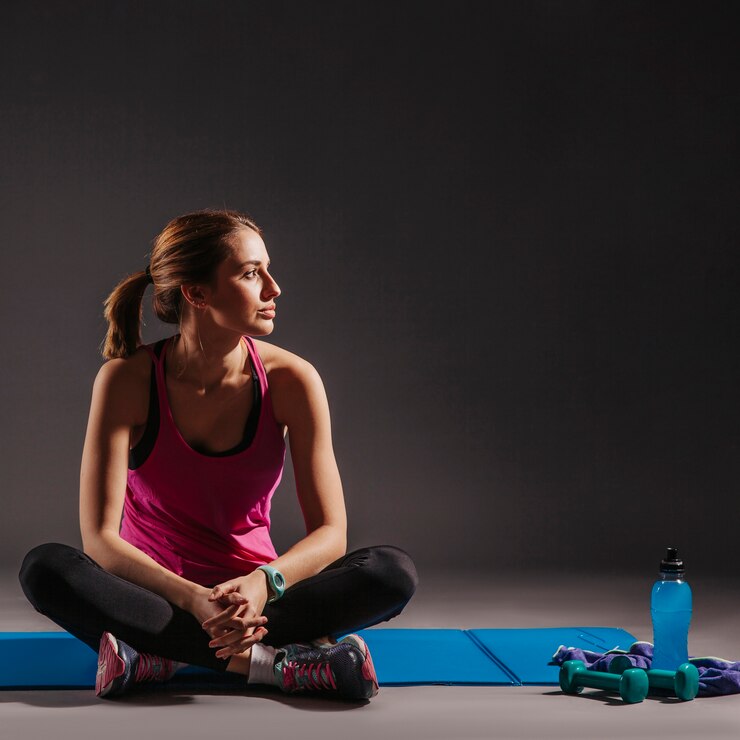
Moving to Intermediate Routines
After six weeks of foundational training your body is ready for more advanced workouts. Here’s what you can expect with intermediate routines:
- Increased Intensity: These workouts will push you harder than before. You’ll encounter more complex movements and longer workout durations.
- Variety in Exercises: Get ready to spice up your routine with new exercises that challenge different muscle groups, keeping your sessions exciting and effective.
- Focus on Form: As exercises get tougher, maintaining proper form becomes crucial to avoid injuries and maximize benefits.
Specific Area-Focused Workouts
Maybe you’ve discovered a passion for toning a specific part of your body or addressing a particular fitness goal. Here’s where focused workouts come into play:
- Core Strengthening: A strong core is vital for overall fitness. Expect exercises like planks, Russian twists, and leg raises that target your abdominal and back muscles.
- Upper Body Tone-Up: Workouts focusing on the arms, shoulders, and chest will typically include push-ups, tricep dips, and dumbbell exercises.
- Lower Body Blast: To strengthen your legs and glutes, look for routines with squats, lunges, and calf raises.
Conclusion
As you continue with your Home Workout For Female Beginners, embrace each new day as an opportunity to improve your health and wellbeing. Your dedication even on the days when motivation seems elusive is a testament to your inner strength. The journey might be challenging but the rewards are immeasurable. Consistency indeed, is the golden thread in this tapestry of fitness. The work you do today lays the foundation for a healthier, happier tomorrow. Each rep, each workout, each healthy choice is a step closer to a more fulfilling life.
Celebrate your progress, learn from the setbacks and always keep moving forward. Your future self will thank you for the love and care you showed today. Here’s to you, to your health and to a journey that truly changes life for the better.
